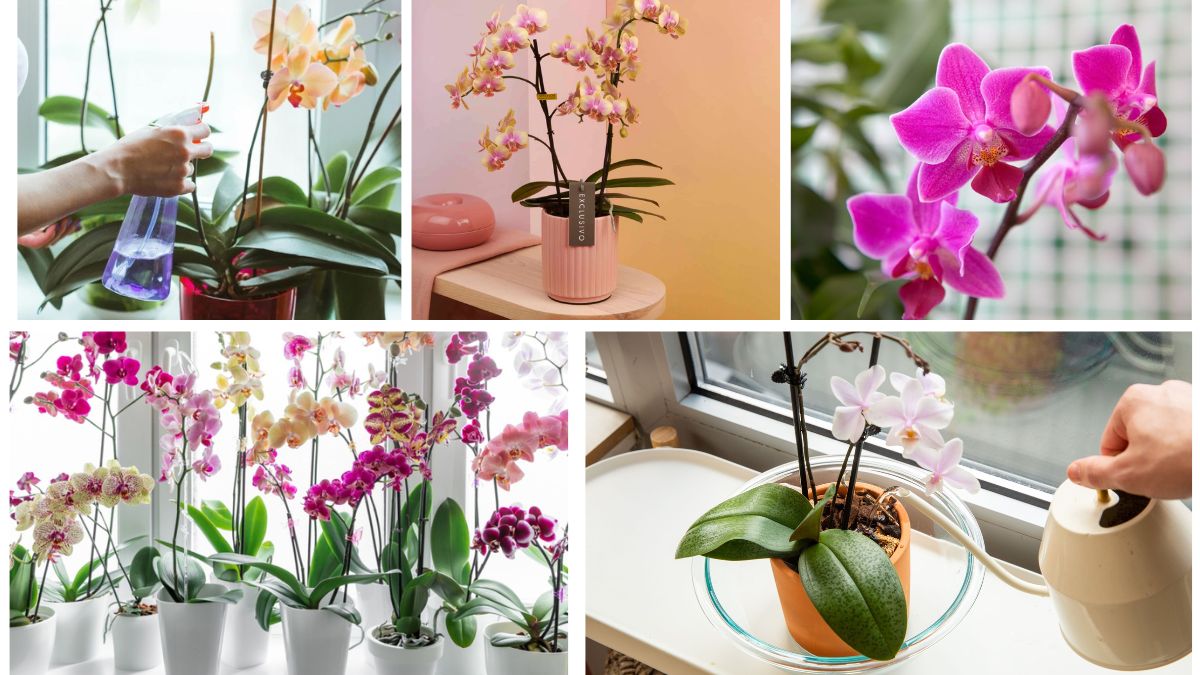Orchids are among the most captivating flowering plants, admired for their exotic beauty, vibrant colors, and intricate petal structures. Despite their reputation for being delicate and difficult to care for, orchids can thrive indoors year-round when given the right conditions. With the right balance of light, humidity, water, and nutrients, these elegant flowers can bloom repeatedly, making them a rewarding addition to any home garden.
This detailed orchid care guide will walk you through everything you need to know—from selecting the right orchid variety to creating ideal growing conditions and maintaining consistent blooms throughout the year.
1. Choosing the Right Orchid Variety for Indoors
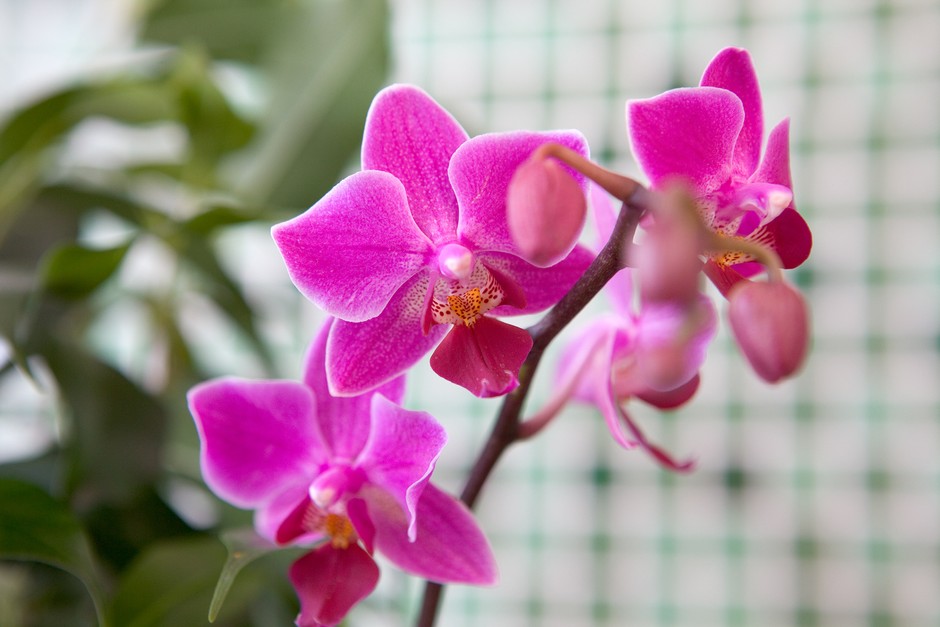
Not all orchids require the same level of care, and some are better suited for indoor growing than others. Choosing a resilient variety will make it much easier to achieve year-round blooms.
Popular Indoor Orchid Varieties:
- Phalaenopsis (Moth Orchid): The most common and beginner-friendly type, known for its long-lasting blooms in shades of white, pink, purple, and yellow.
- Dendrobium: Produces tall stems with multiple blossoms, perfect for bright indoor settings.
- Cattleya: Famous for their large, fragrant flowers, often seen in corsages.
- Oncidium (Dancing Lady Orchid): Known for clusters of bright yellow blooms resembling dancing figures.
Tip: If you’re new to orchids, start with Phalaenopsis—they are hardy and bloom for months with minimal effort.
2. Providing the Right Light Conditions
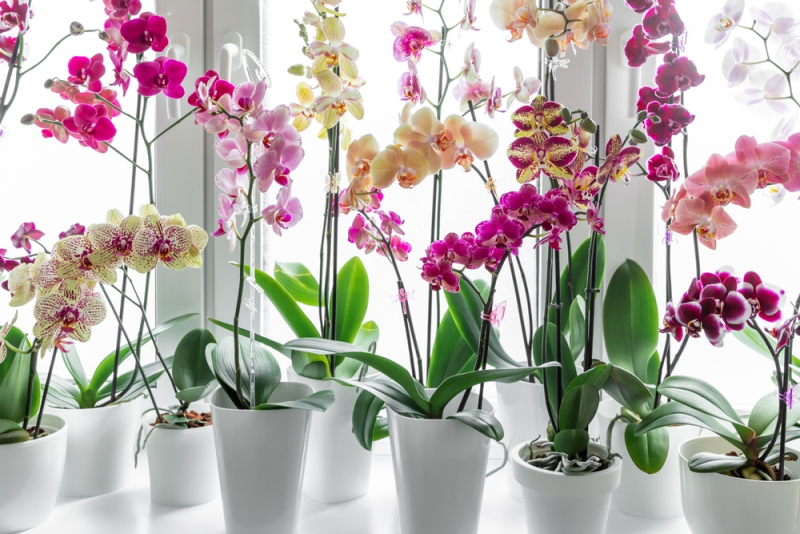
Light is one of the most critical factors in orchid care. Insufficient or excessive light can prevent orchids from blooming or damage their leaves.
- Ideal Placement: Place orchids near east- or south-facing windows, where they receive bright but indirect sunlight.
- Avoid Harsh Sun: Direct afternoon sunlight can scorch leaves; filter it using sheer curtains.
- Signs of Proper Lighting: Healthy orchid leaves should be bright green. Dark green leaves indicate too little light, while yellowish or scorched leaves signal too much light.
- Supplemental Light: In low-light homes, use grow lights (LED or fluorescent) for 12–14 hours a day.
3. Maintaining Proper Temperature and Humidity
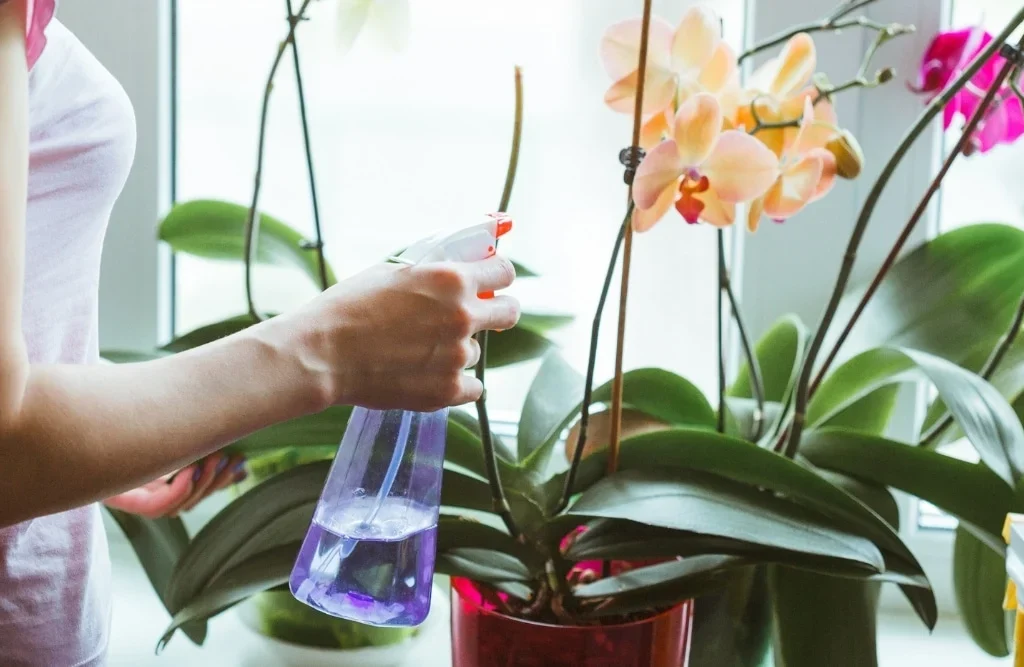
Orchids are tropical plants, meaning they thrive in warm, humid conditions.
- Temperature Range: Most orchids prefer 65–75°F (18–24°C) during the day and 55–65°F (13–18°C) at night.
- Humidity Needs: Orchids thrive in 50–70% humidity. If your indoor air is dry, especially in winter, use a humidifier or place a water-filled pebble tray beneath the orchid pot.
- Air Circulation: Good airflow prevents fungal infections. A gentle fan can help keep air fresh around your orchids.
4. Watering Orchids the Right Way

Overwatering is the number one cause of orchid death, as it leads to root rot. Orchids need moisture but also require well-draining conditions.
- Watering Frequency: Water once every 7–10 days, allowing the potting medium to dry slightly between waterings.
- Best Technique: Water thoroughly until it runs out of the drainage holes, then let it drain completely. Avoid leaving the pot sitting in water.
- Water Type: Use room-temperature water. Rainwater or distilled water is ideal since tap water often contains salts and chemicals that harm orchids.
- Signs of Trouble: Wrinkled leaves indicate under-watering, while mushy roots suggest over-watering.
5. Choosing the Right Potting Mix and Container
Unlike regular houseplants, orchids don’t grow in soil. Instead, they require a special potting mix that mimics their natural epiphytic environment (growing on trees in the wild).
Best Potting Mix Components:
- Bark Chips: Provide airflow and drainage.
- Sphagnum Moss: Retains moisture without becoming waterlogged.
- Perlite or Charcoal: Improves drainage and prevents root rot.
Best Orchid Containers:
- Clear Plastic Pots: Allow you to monitor root health and moisture levels.
- Orchid-Specific Pots: Feature side slits for increased air circulation.
Repot orchids every 1–2 years, ideally after they finish blooming, to refresh the growing medium and prevent root crowding.
6. Fertilizing Orchids for Healthy Growth
Orchids require regular feeding to sustain vibrant blooms.
- Type of Fertilizer: Use a balanced orchid fertilizer (20-20-20) or one labeled specifically for orchids.
- Feeding Schedule: Apply fertilizer every 2 weeks during active growth and reduce to once a month when orchids are resting.
- Dilution Method: Follow the rule “weakly, weekly”—dilute fertilizer to half or quarter strength to avoid root burn.
7. Encouraging Orchids to Rebloom
Getting orchids to bloom again is often the biggest challenge for beginners. After the first blooms fade, orchids enter a resting phase, but with proper care, they can rebloom several times a year.
- For Phalaenopsis: Cut the flower spike just above a node (small bump on the stem). This may trigger side shoots and new blooms.
- Temperature Difference: Exposing orchids to cooler night temperatures (55–60°F or 13–15°C) for 2–3 weeks encourages flower spikes.
- Patience is Key: Some orchids naturally bloom only once or twice a year. Keep nurturing them during rest periods.
8. Common Orchid Problems and Solutions
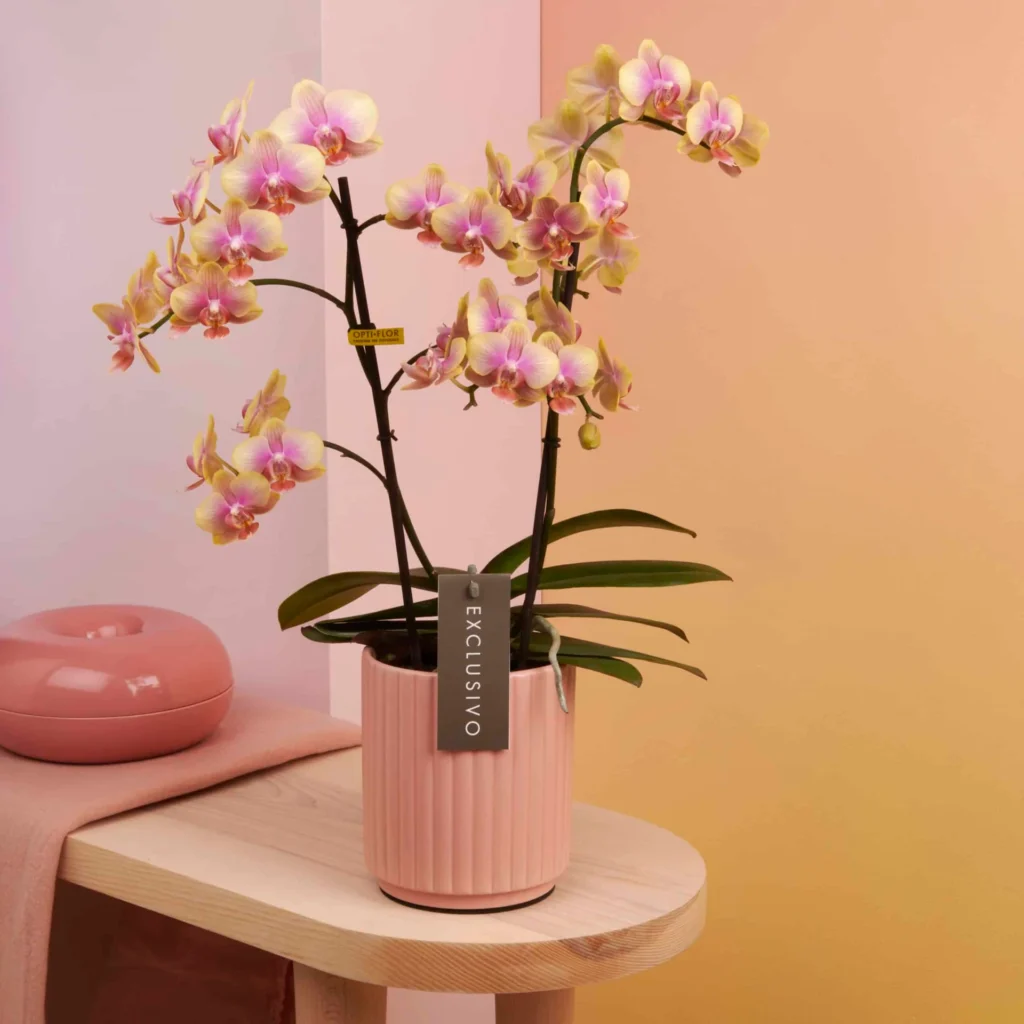
Even with the best care, orchids may face some challenges.
- Yellowing Leaves: Usually caused by too much sunlight or overwatering.
- Drooping Flowers: Normal after blooms finish, but persistent drooping may indicate lack of water.
- Pests (Aphids, Mealybugs, Scale): Wipe leaves with neem oil or insecticidal soap.
- Root Rot: Caused by poor drainage—repot immediately in fresh mix.
9. Seasonal Orchid Care Tips
Spring & Summer:
- Increase watering and feeding.
- Provide more shade as sunlight intensifies.
Fall & Winter:
- Reduce watering slightly.
- Maintain humidity indoors with humidifiers.
- Use grow lights to compensate for shorter days.
10. Benefits of Growing Orchids Indoors
Caring for orchids isn’t just about enjoying their blooms—it also provides several benefits:
- Air Purification: Orchids filter toxins and improve indoor air quality.
- Stress Reduction: Gardening and tending to orchids promotes relaxation.
- Interior Beauty: Their striking flowers add elegance to any room.
- Learning Experience: Orchid care helps develop gardening skills and patience.
Conclusion
Orchids may seem demanding at first, but with the right care routine, they can thrive indoors and reward you with stunning blooms year-round. By choosing the right variety, providing balanced light, water, and humidity, and practicing patience during rest phases, you can keep your orchids healthy and reblooming for years to come.
Orchid care is not just about growing a plant—it’s about cultivating beauty, patience, and joy inside your home. Once you master the basics, your orchids will transform your living space into a lush, exotic paradise.
